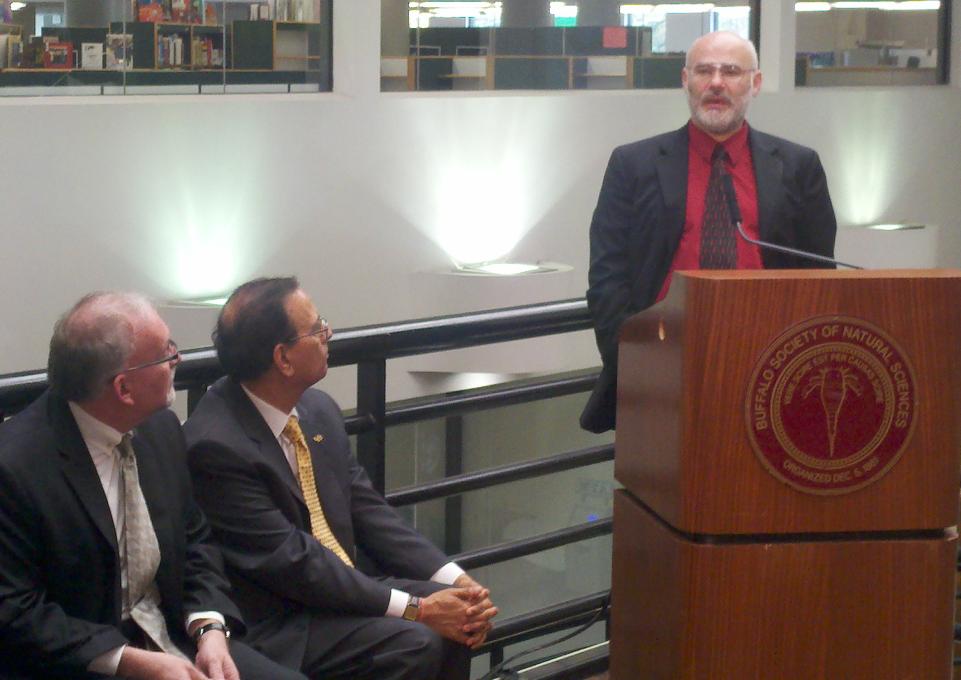
A coalition of regional partners has received $9.8 million from the National Science Foundation to expand a promising, teacher-focused initiative that aims to change how science is taught in Buffalo Public Schools.
The five-year program, led by the University at Buffalo, Buffalo State College, Buffalo Public Schools, and the Buffalo Museum of Science, is called the Interdisciplinary Science and Engineering Partnership (ISEP). The idea behind the initiative is to throw the community’s diverse resources behind reforming science education, primarily by improving teachers’ skills and knowledge.
Through ISEP, science and math teachers at 12 middle and high schools in the Buffalo Public Schools district will receive a wealth of new professional development opportunities. Chief among them: the chance to spend a summer conducting interdisciplinary research with local scientists.
These experiences will encourage educators to add interdisciplinary content to lessons, and to devote more class time to activities like experiments that emphasize problem-solving. This approach to teaching makes science more exciting for students, challenging them to think broadly and arrive at answers on their own.
Throughout the school year, ISEP teachers will receive support and mentoring from professional learning communities that include fellow teachers, museum educators, faculty from Buffalo State and UB, UB students, and local scientists and engineers.
“Buffalo State is proud to extend its initiatives in science education through the Interdisciplinary Science and Engineering Partnership,” said Buffalo State President Aaron Podolefsky. “We look forward to giving 60 Buffalo middle school teachers new tools to enhance student learning through summer courses in the physics and technology of energy and to expanding our summer science camps for Buffalo Public Schools students. We are pleased that the NSF grant will allow Buffalo State to work with the University at Buffalo, Buffalo Public Schools, the Buffalo Museum of Science and our supporting partners to strengthen the cradle-to-career education pipeline in the city of Buffalo.”
Buffalo State faculty supporting ISEP activities include: Daniel L. MacIsaac (pictured at podium), project co-principal investigator, and associate professor, physics; David S. Abbott, instructional support specialist, physics; Dara J. Dorsey, lecturer, earth sciences and science education; Kathleen A. Falconer, lecturer, elementary education and reading; Luanna S. Gomez, assistant professor, physics; Clark W. Greene, lecturer, technology; David R. Henry, associate professor, elementary education and reading; Catherine Lange, assistant professor, earth sciences and science education; James Mayrose, associate professor, technology; Joseph Zawicki, associate professor, earth sciences and science education; and Lowell Sylwester, lecturer of physics, and retired physics teacher from West Seneca West High School.
Ultimately, the goal is to improve teacher retention and student success in a high-needs district where performance in science and math falls well below the state average. If it works, ISEP will raise the number of students finishing high school with an interest in science, technology, engineering and math.
In addition to the four core partners, organizations supporting ISEP include Praxair Inc., Roswell Park Cancer Institute, Hauptman-Woodward Medical Research Institute, the Western New York Service-Learning Coalition and the Buffalo Public Schools District Parent Coordinating Council. Pilot funding for the program came from a $485,000 grant from the John R. Oishei Foundation.
